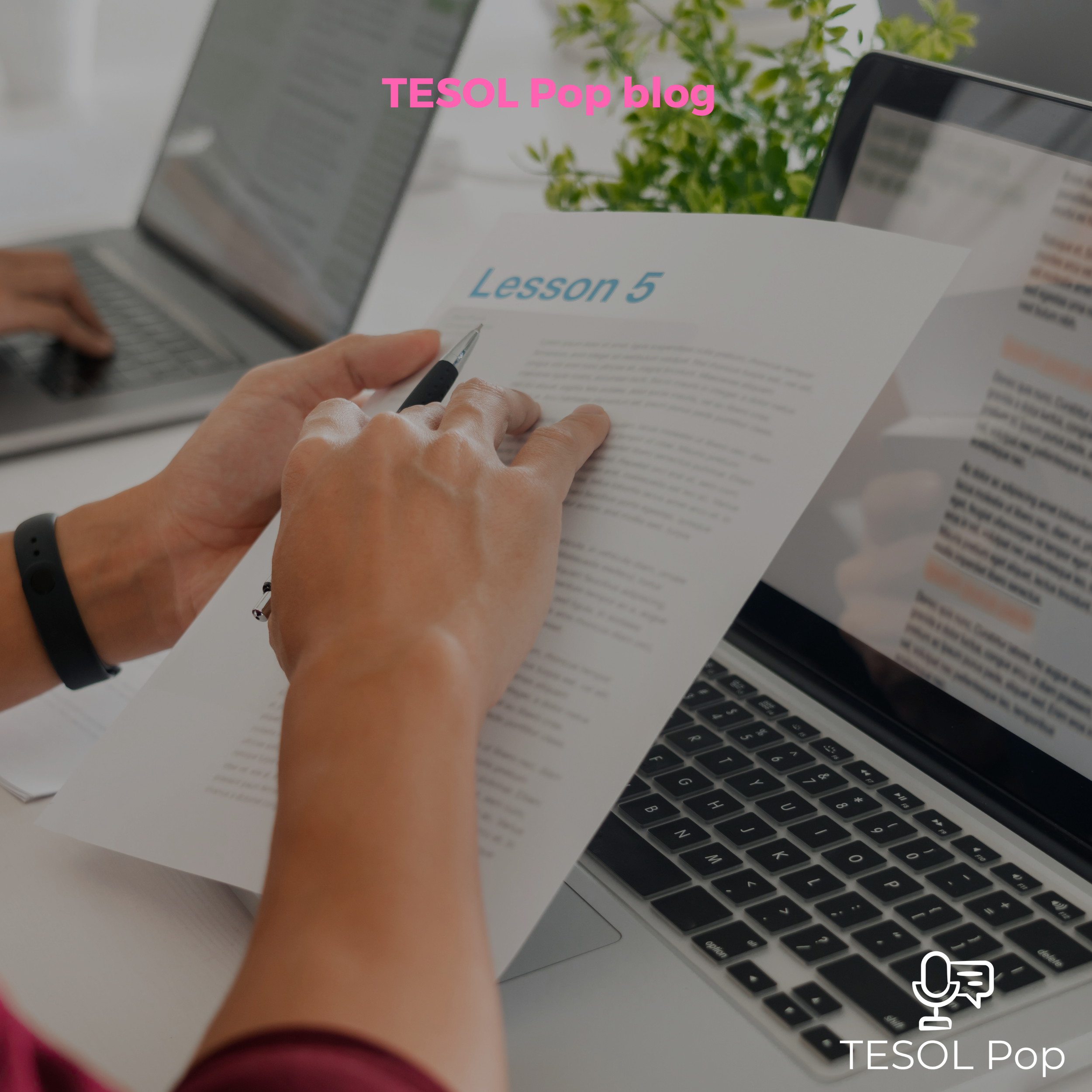A Guide to Planning a Present-Practice-Produce (PPP) Lesson
Among the numerous acronyms that are used in the field of teaching languages is the highly criticised yet resilient PPP model. Many teachers will encounter this acronym within the first few days of a training course when they start to explore how to plan a lesson. Although there are many ways to organise a lesson, the merit of PPP is that it provides a step-by-step model for new teachers to follow by dividing the lesson into three main stages: Present, Practice and Produce. This blog looks at what happens at each stage, the key points to remember when planning a PPP lesson, and when PPP is most effective.
PRESENTATION
Rooted in the Behaviourist learning theory from the 1960s, PPP centres on the notion that practice makes perfect. As a result, the PPP model moves learners from supported to freer use of the target language in a lesson. At the start of the lesson, learners are presented with the target language – a grammar point or a set of vocabulary. This first Presentation stage of the lesson enables learners to explore the language's meaning, form and use before they are expected to practice using the new language.
An advantage of this Presentation stage is that it lets you focus learners’ attention on studying a specific language point or vocabulary set. You might use a short text or an audio clip to present a grammar point in context to learners. By setting well-designed tasks, learners can be guided to discover the target language in the text or audio and then explore meaning, form and use with the teacher's support - this is known as a top-down approach. Alternatively, a bottom-up approach can be adopted by using questions and visuals to elicit the target language from learners before looking at how it is used in a text or audio.
When deciding whether to adopt a top-down or bottom-up approach for the Presentation of the target language, consider learners’ needs, the target language, and the appropriateness of the teaching materials. A top-down approach that starts with a text or an audio clip is likely to be successful, providing that the chosen text or audio demonstrates the target language in use and is appropriate for the level of the learners. A text or audio containing too much unknown language can create confusion as learners struggle to identify the target language and work out its meaning.
Similarly, with a bottom-up approach, how the meaning of the target language will be elicited from the learners is part of the planning process. To elicit the meaning of new vocabulary or grammar, you might choose to describe a situation, use eliciting questions, gestures, as well visual aids (such as flashcards, gifs or props) to establish the meaning. Teacher talk and any supporting resources at this stage needs to be carefully thought through. Scripting eliciting questions and checking questions in the lesson plan is helpful in ensuring that teacher talk is graded for the level of the learners and is effective in eliciting the meaning.
Whether a top-down or bottom-up approach is adopted in Presenting the target language, this stage of a PPP lesson needs to be well-planned for the Practice and Produce stages to follow on. Careful planning is needed in order to set the learners up for success in the following Practice tasks, and thus prevent backpedalling to the Presentation stage because learners are unclear on what the target language means, or how it is used.
PRACTICE
The Practice stage of a PPP lesson gives learners the opportunity to use the target language in a controlled way – this focuses on them developing their accuracy in using the new language. Controlled Practice tasks can include matching activities, fill in the gaps, organising words into the correct order, or a memory card game to name just a few. As controlled Practice tasks centre on building learners’ accuracy, tasks should focus on learners using the target language and have a clear answer. If the answer for a controlled Practice task is unclear or contains multiple correct answers, then learners will struggle to recognise patterns in how the target language is used.
To bridge the jump from Practice to Produce, it is a good idea to set a second Practice task that gets learners using the target language more freely. A freer Practice task can be as simple as learners noting a few sentences that use the target language. This type of freer Practice gives learners the opportunity to experiment in merging the new language with their existing language with some support. The trick here is to strike a balance in providing enough scaffolding for learners to experiment, but not so much that it becomes another controlled exercise.
PRODUCE
The third and final Produce stage is designed to develop learners’ fluency. Learners at this stage are expected to produce the target language in context, whether this is in their speaking or writing. As a result, Produce tasks that develop learners’ speaking skills can range from role-plays to debates depending on the target language and context of the lesson. Similarly, if the language and context of the lesson lends to developing learners’ writing skills, they may write a recipe, a film review, a synopsis of a book, a description of an item for sale online…the list is endless. Whether you’re getting your learners to Produce via a speaking or writing task, allow sufficient time for them to plan, participate and receive feedback before wrapping up the lesson.
A CASE FOR PPP
A PPP staged lesson works well in working with beginner level learners as it equips them with the foundations they need in order to be able to communicate. Equally, this type of step-by-step lesson staging can help to build learners’ and teacher’s confidence alike. The latter point is why PPP is so widely used as an introduction to lesson planning on teacher training courses.
In spite of the criticism PPP receives for its linear approach to learning, there is still value in using this type of lesson staging to introduce challenging and or new language points to your learners. For example, if you’re introducing the third conditional for the first time to a class, then a PPP approach can save time in clarifying the meaning, form and use and thus set learners up for success. On the other hand, if you miscalculate learners’ needs and plan a PPP lesson on a language point they know well, they can quickly become disengaged during the Presentation stage and you’re left having to think on your feet on how to make the lesson more challenging.
While a PPP staged lesson lends well to a linguistic-focused lesson, where the target language relates to grammar, syntax, vocabulary or pronunciation, it is less well-suited for a skills-focused lesson where learners develop their reading, listening, writing and/or speaking. In the case of skills-based lessons, an ESA (Engage-Study-Activate) staged lesson works well.
PLANNING YOUR NEXT LESSON
For your next lesson, consider whether learners need to be ‘Presented’ with the target language or whether a less linear staged lesson would be better suited. When planning a PPP lesson, consider planning backwards to ensure that learners are supported in the stages leading up to Produce and that, at each stage, they’re recycling the target language. And finally, spend time anticipating challenges your learners will encounter in understanding the meaning, form, and use of the target language and how you will address these challenges in the Presentation and Practice stages.
Download the example lesson plan to help you plan your next lesson using PPP.



Engage-Study-Activate (ESA) is a lesson staging model that Jeremy Harmer introduced in 'How to Teach English' in 1997. This flexible lesson model enables us as teachers to tailor input and practice to our students' needs.